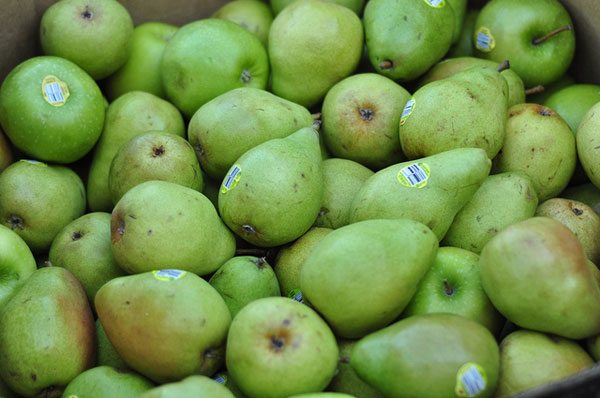
September 18, 2017; WAMU
It’s common knowledge that eating healthfully in the U.S. is more expensive than eating junk, and low-income neighborhoods are often bereft of stores that sell fruits, vegetables, and other healthful choices. Many low-income residents get assistance from food pantries, but the pantries often take what they can get from grocery stores, and that can mean piles of processed convenience food that’s easy and cheap for stores to donate.
Not so the Capital Area Food Bank (CAFB) in Washington, D.C. Earlier this year, they committed to the Partnership for a Healthier America and did the following:
- Increased the quality of its food supply, refusing to accept soda, candy, and other junk food
- Stepped up distribution of produce and multiplied its impact with recipes and produce guides
- Piloted school-based models that get fruits and vegetables to children when their palates are forming
CAFB expanded their mission to include public health promotion as well as meal provision. “As public health organizations, America’s food banks have a moral imperative to combat not just hunger, but their companion challenges—obesity, heart disease, and diabetes,” said Nancy E. Roman, president and CEO of the CAFB. The pantry reduced the junk food it supplies to its more than 400 partners by 84 percent.
It’s equally exciting to see that the change was driven by the people the organization serves. “The feedback we were getting from our partners, over and over again, was that people were hearing from their doctors that they really need to reduce the salt and sugar in their diet and increase fiber,” said Hilary Salmon, director of communications at CAFB.
Sign up for our free newsletters
Subscribe to NPQ's newsletters to have our top stories delivered directly to your inbox.
By signing up, you agree to our privacy policy and terms of use, and to receive messages from NPQ and our partners.
When the food pantry started actively responding to their partners’ requests, supporters noticed. Not only did they retain all of their food donors, but funding has already risen by 22 percent, a bigger increase than over the entire prior year. This is encouraging news to other food banks, which often feel they can’t refuse the junk that grocery stores offer them for fear of losing the whole donation.
Health initiatives targeting low-income populations are often derided as paternalistic or racist, accusing wealthy benefactors of making decisions for low-income families who get portrayed as not savvy or motivated enough to make the right choices about their diets. While that’s certainly a concern, “choice” is dependent upon available options. Implying that low-income families wouldn’t want to improve their health through food, and therefore don’t merit the option, limits both their choices and their overall health improvement. CAFB’s recipients conveyed recommendations from their doctors, asking for help, and CAFB responded.
Amanda Musilli, who develops community partnerships for Whole Foods in Detroit, told the Food & Environment Reporting Network, “People said, well, how do you expect Detroiters to afford this? Many times, those were not Detroiters, and those were white people saying, ‘How are those people going to afford your food?’” Changing the perception of healthful food from a luxury to a staple, making it accessible enough to be the norm, is a long-term goal of many health nonprofits.
One of CAFB’s partners, the Sharing Life food pantry in Texas, uses behavioral economics to try influence patrons to make healthier choices, but they’re upfront about it. “Our goal is to try to educate people and not just shove a package of whole wheat spaghetti in their car and say, ‘try to deal with this,’” says Teresa Jackson, executive director of Sharing Life. Since they implemented “nudging” techniques like making vegetables easier to reach and putting up enticing posters of fruit, Sharing Life has seen a 46 percent increase in people taking home the featured (healthful) foods.
CAFB is looking to be a real community partner—not just a place to get food, but a place to improve health, contract with local farmers to support their involvement, and support retailers who set up shop in food deserts. If they continue taking their cues from their community, this could be a boon for many D.C. residents.—Erin Rubin













